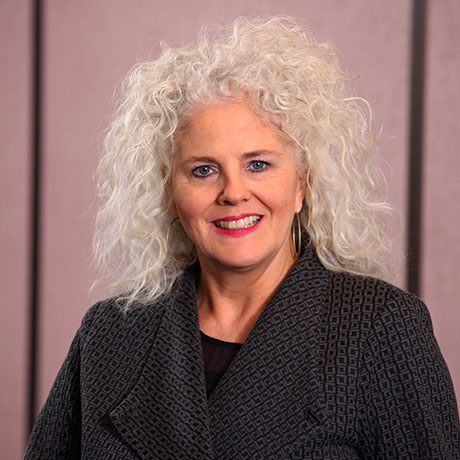Benefits of Hiring a Broker
 By Kevin Brady
By Kevin Brady
Why use a Dental Broker to Sell your Practice?
After many years of the hard work, long hours, and substantial investment that go into building a dental practice, you’re now thinking about selling the practice. It’s easy to assume that the practice will sell quickly and for a great price when you are ready to sell. Feedback from doctors who have recently sold their practices shows that the process is more complicated and stressful than anticipated. This is why it is essential to hire a dental broker to help guide you through the process.
Potential individual buyers and DSOs (Dental Service Organizations) will have experts who can help them navigate the sale. You will also need someone to advocate for you and help you understand the process from start to finish. In most cases, the last time you were involved in a practice sale was when you bought the practice, which means you need someone to help you navigate the process.
Benefits of Hiring a Broker
Here are just a few reasons why hiring a dental broker to assist with planning and selling your practice would be a sound investment.
- Determining Fair Market Price: At Omni Practice Group, we have certified practice appraisers that put together a valuation to maximize a fair market sales price for the practice and real estate (if applicable).
- Develop a Marketing Plan for the Practice while Maintaining Confidentiality: Omni provides confidential marketing and advertising services for your practice that do not identify you or your practice until a buyer is screened and signs a confidential Non-Disclosure Agreement. Omni also provides the financial prospectus for your practice along with confidential personal showings of the practice to potential buyers. Finding the right buyer that you will want to take over your practice can take some time. Good practices can sell quickly, but some can take months or even a year to sell.
- Letter of Intent: Omni brokers negotiate on your behalf, a Letter of Intent with your approval for the purchase price of the Practice and the Accounts Receivable. Your broker will also guide you through the due diligence conditions for bank financing, help negotiate a new lease agreement, non-compete agreements, and other conditions that both the seller and the buyer will agree on. If real estate is included, your Omni broker will determine the value of the real estate with a “Broker’s Real Estate Opinion” that is used to market the real estate with the practice.
- Finalizing the Sale: Your Omni broker works with you to determine a possible closing date based on whether your practice has real estate to sell or a lease that will be negotiated with the new owner. Omni’s brokers work with attorneys to finalize the Asset Purchase Agreement for both the seller and the buyer.
Omni’s 70-point-plus checklist helps guide both the seller and the buyer through the process of items to be completed prior to the sale closing.
A banker at one of the major banks recently said, “A high percentage of deals that fall apart is due to the seller not using a dental broker.” Using a broker typically saves sellers a lot of time, money, and headaches in selling their practices.
Omni Practice Group has been helping dentists for over 15 years with the planning and transitioning of their practices. If you’re thinking about selling now or in the next few years, give us a call for a “free consultation” to help you determine a plan that works for you and how we can assist with a smooth and profitable transition – 877-866-6053.
Read More10 Tips to Help Make a Workback Successful
Bruce Johnson, DDS, Practice Transition Advisor at Omni Practice Group, has personally been involved with 3 practice sales and workback agreements. In this video, he provides you with 10 tips to help your workback transition be successful.
Read MoreBuying Another Location
 By Megan Urban, Omni Practice Group
By Megan Urban, Omni Practice Group
It’s very exciting to think about adding a location! Here are some issues to think about before making this big decision.
Why? If it’s to increase collections, maybe you can simply add more days or extended hours at your current location. Verify what your current patient retention is to determine if you need to mine from existing patients. Is there any area nearby that is underserved?
Where? Check your current zip code demographics and determine where most of your patients come from and if it makes sense to market that specific area. Do your due diligence regarding the number of dentists in the areas around you to make a good decision on where you may be more successful.
Will you have current patients going to a new location? You don’t want to add a location only to find that a large number of patients switch to the new location. Some cannibalism is fine, but remember the point is to increase patients/collections, not move them from one location to another.
How will you handle patients going to both offices? Contact your dental software company and have them set up the same system in the new location and set up provider numbers for each location so everyone can see past and diagnosed treatment, as well as health history, AR, etc.
How will you know if both locations are profitable? Work with your CPA to have books that show you numbers for each location as well as together, so that means you will need to post collections, payroll, dental supplies, lab, utilities, etc. per location. Monitor provider production in each location. Are some dentists and hygienists more productive in one location, and if so, why?
Who will work it? If you have a team that wants more hours, that is ideal since they already know the systems and processes you have set up. Be sure to have team members clock in hours to each location as applicable.
Need another dentist? Interviewing is critical to find the right fit. If the associate will be working alone in one of the locations, you will want to do a lot of training, so they understand their role, responsibility with the team, and simply set your expectations, then continue to monitor. Work with your dental attorney to create a job description, employment agreement, compensation, non-compete, etc.
How do I manage multiple locations? Consider hiring a manager that can oversee training, team schedules, and general practice management.
Work with your transition consultant (broker) to assist you! Contact us today.
Read MoreIt’s All in the Numbers
As you close out this past year and reflect on the first full year without any shutdowns as 2020 brought us, it makes sense to step back and take a look at your numbers. This is the case whether you are in your first year of practice ownership, have owned your practice for ten years, or you are getting closer and closer to retirement. You should always be managing your practice to your numbers while keeping the number one goal of taking care of your patients to the best of your ability.
So that all sounds great, but how do you manage to your numbers? The first step is grabbing your Profit and Loss statement and a Production by Provider or Production by Procedure report for 2020. If you know Microsoft Excel, you can input the numbers into an Excel spreadsheet. If you don’t know Excel, you can grab your handy-dandy calculator.
Most numbers you manage to are calculated based on a percentage of your gross collections. That’s the top number on your profit and loss statement. You should take the number after returns or other credits to gross revenue. Some Profit and Loss statements may call this number Profit and others will call it Revenue.
The first number to look at is your staff expense as a percentage of revenue. Add your staff salaries, payroll tax for staff, and staff benefits. Divide that total by revenue. Your target should be about 25% of revenue. If you’re slightly above 25%, don’t worry, increasing collections while keeping staff salaries flat will help you improve this number. If you’re over 35% and you really don’t think you can improve collections, you should analyze your staff. Maybe you have too many, or maybe your staff that is overpaid. These days, it’s easy to overpay staff since they’re hard to come by. Time and time again, when we look at practice numbers, this is one of the biggest profitability killers.
The next number to look at is facilities expense as a percentage of collections. This includes your base rent plus any of the common areas that you pay for and other facilities expense – garbage, parking lot maintenance, etc. This expense should not be more than 7% to 9% of revenue. If you are significantly higher than this number, you are not maximizing your facility, overpaying on rent, or you have too big of space for what you need. You can either increase collections or decide to downsize your space, sublease space, or do something else that will help get your numbers down in the 7% to 9% range.
Dental Supplies expense is something else to look at. Divide Dental Supplies expense by revenue. The target is 6% of revenue. If you’re a few percentage points off, don’t worry about it. If you’re at 12% to 15% or higher, you may have supplies walking out the door, overstocking your supply cabinet, or you’re buying top-end products. This should be a quick fix if you have a meeting with your person that orders supplies and give them a budget.
Lab expense is similar to dental supplies. If you’re a basic crown and bridge practice, you should be at 7% to 9% of revenues if you don’t use a milling machine in-house or you don’t place a lot of implants. The latter two will skew the numbers. Negotiate with your lab if you are higher than 7% to 9%. If you’re with a high-end lab, you’re at 12% and love their work, don’t change labs. You’re only a few points off. You can make up the difference elsewhere.
The other quick measure is hygiene as a percentage of total collections. Take your Production by Provider report or Production by Procedure report and figure out how much of collections are coming out of hygiene as a percentage of total revenue. The target is to be above 30% of revenue coming from your hygiene program. If you’re in the low 20% or less and you have a general dental practice, you should take a look at your hygiene schedule and see how many patients they’re seeing per day. Maybe their schedule isn’t full, or maybe hygiene is booked out for several months and the hygienist can’t keep up. You will need to analyze this for yourself.
Looking at your numbers is something all business owners do to help them manage their practice. These are a few simple numbers that you can quickly measure a few times per year, make a few changes and you can get your overhead down below the national average of 65%. Best wishes on the New Year and may your overhead be under control.
Read MoreBuyer Trends in the Veterinary Industry
Happy Holidays and congratulations on making it through another year! And what a year it’s been. Covid is still rearing its ugly self in new forms. Wearing masks went away, then came back again. Some veterinary conventions were canceled, some held virtually and others allowed in-person attendance. Corporate veterinary practice buyers are still around. Individual buyers are also acquiring practices albeit hesitantly. Banks started financing practices again. So what’s going to happen in 2022?
We hope that we can get back to some form of normalcy. Wouldn’t it be great to go out to dinner and not have to get carded as if we’re a 21-year-old buying our first beer? Having to show your vaccine card and wear masks is getting to be a pain. Covid is probably going to be around in some form or another for a very long time and will be similar to the flu as time wears on.
Corporate buyers will also be around for a long time. I’ve heard that corporates currently hold between 12% and 22% of all veterinary practices. Depending on who you ask and how you calculate what constitutes a corporate buyer. I would guess the real number is probably around 17%. There has been some consolidation of corporate buyers that is occurring. Getting acquired by a larger corporate buyer is the goal of the smaller corporate buyers. As they get gobbled up, there will be fewer and fewer buyers to drive up the value of practices.
Individuals are still buying practices and will continue to do so forever. It’s our job as practice brokers as well as the job of others in the veterinary industry to educate and assure veterinarians that they can be successful owning a veterinary practice and do very well. Many buyers worry about competing against the corporate owners thinking that they cannot get the same pricing on supplies and services that the big guys receive. Most supply companies have told me that they will in fact give the same pricing on supplies that the corporate owners get.
We wanted to keep you informed and know what’s going on in the veterinary practice buyer world. We wish you a happy and healthy 2022!
Read More
 By
By  By
By